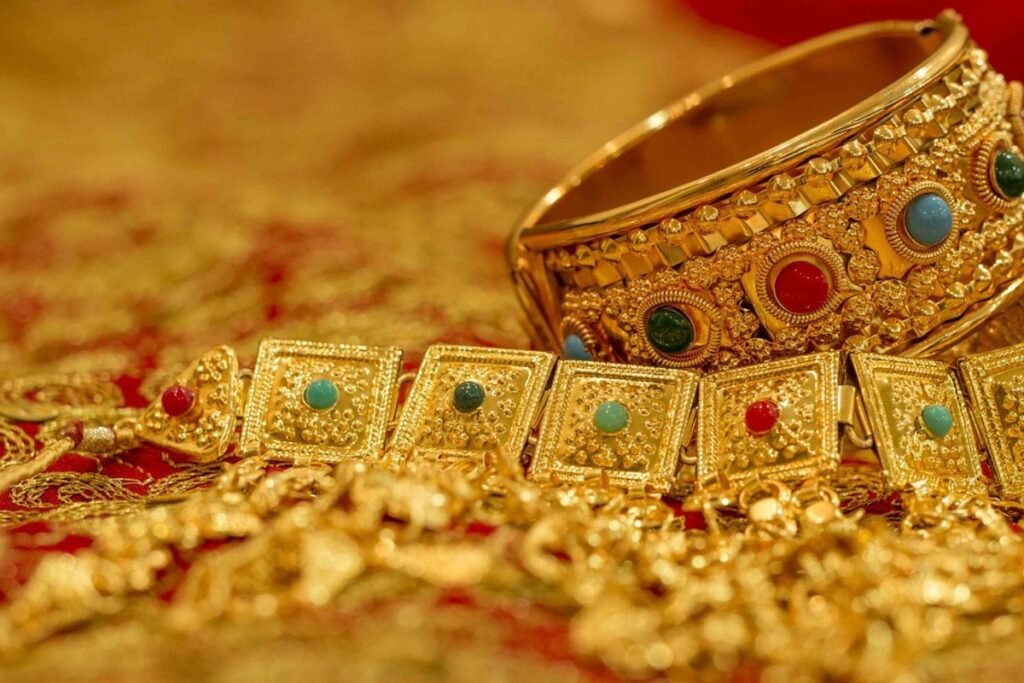Where did gold jewelry originate? Gold has been around since time immemorial, but it remains one of the most coveted precious metals in the world. With its natural beauty and radiance, many cultures continue to use it to create admirable objects of art, adorn houses of worship, and more. Because of gold’s malleability and tarnish resistance, humans realized that it can be an excellent material for making jewelry. That discovery led to the use of gold as an item of ornamentation.
Where Did Gold Jewelry Originate?
Gold jewelry seems to have existed forever, but have you ever wondered where and how it all started? In this article, we’ll be taking you back to the time when humans first discovered how to craft gold jewelry. We’ll also explore the origins of gold jewelry and its development throughout the centuries. Lastly, we’ll discuss the characteristics of gold and give some tips on how you can make a wise gold jewelry purchase.
What is the Origin of Jewelry?
Before diving into the beginnings of gold jewelry, let us first talk about the origin of jewelry in general. Since prehistoric times, men and women have always loved to adorn themselves. While it served mostly ornamental purposes, jewelry also functioned as a protection from evil elements (i.e., talisman jewelry), a symbol of one’s status in society, and a way of keeping clothes together (i.e., brooches).
History of jewelry timeline
Let’s take a look at the history of jewelry design throughout each period.
Ancient jewelry history
When was jewelry first introduced? The most ancient form of adornments was made with shells, bones, stones, and other natural elements. When humans learned about metalworking, it helped facilitate the manufacture of jewelry made of precious metals. As time went on, metalworking techniques improved, and the designs became more intricate. Much of archaeological jewelry were dug up from tombs and hoards. Ancient societies used to bury gold with the dead, believing that the highly-valued material will remain with its owner in the afterlife.
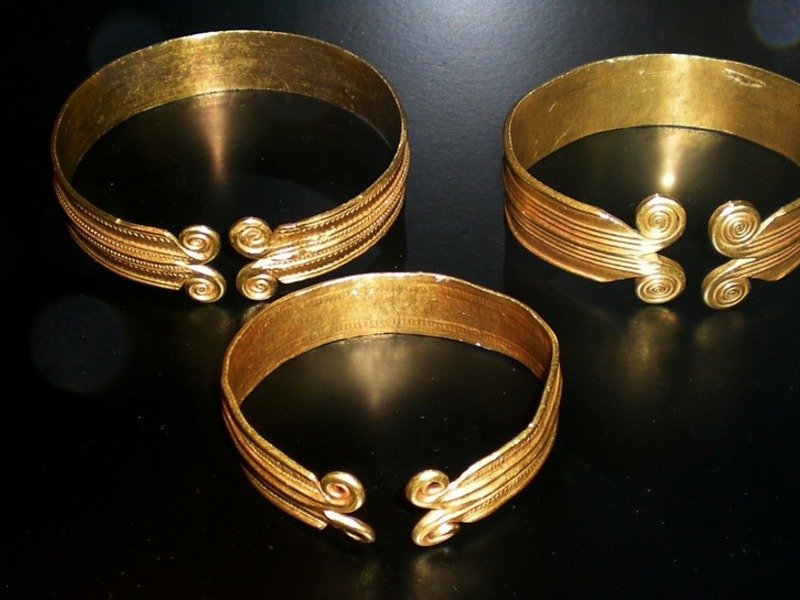
Medieval jewelry
People in medieval Europe were highly-conscious of hierarchy and status. To separate them from ordinary folk, royals, and nobility decorated themselves with gold, silver, and precious gemstones. Individuals in the lower ranks wore cheaper metals, such as copper or pewter. They also placed high importance on the color of jewelry (provided by enamel and gemstones) and its protective ability. Jewels from this period had magical or cryptic inscriptions believed to give its wearer protection.
Renaissance jewelry
This age’s taste for flamboyance was reflected in its jewelry. Enamels, which often covered both sides of a jewel, had more elaborate and colorful designs. Advancements in cutting techniques also enhanced the glitter of gems. The jewelry models during this period showed mythological figures and scenes, signifying a newfound interest in the classical world. Individuals believed that particular gemstones can protect them from specific illnesses and threats, and even encourage and banish characteristics such as bravery and melancholy.
17th-century jewelry
The mid-17th century saw significant changes in fashion, and this expanded to jewelry styles. People wore flashy gold jewelry with dark-colored clothing and gemstones and pearls with pastel-hued fabrics. As global trade grew, gems became more widely available. The most impressive pieces of jewelry during this period were large bodice or breast ornaments that had to be pinned or sewn into stiff dress fabrics.
18th-century jewelry
Diamonds began to dominate the jewelry scene as the brilliant-cut—with its multiple facets—was developed by diamond designers. This sparkly stone usually came mounted in silver, the precious metal that best enhances its transparent color. The largest diamonds were worn on the bodice, while the smaller ones can be scattered all over an outfit.
19th-century jewelry
The 19th century was a period of drastic social and industrial change, but in jewelry, the focus of the design was in the past. During the first decades, classical styles that evoked the glories of ancient Greece and Rome were popular. This interest in the jewelry styles of ancient societies was encouraged by new archaeological discoveries, as goldsmiths tried to imitate old jewelry-making techniques and created pieces that looked antique. Jewels inspired by the Medieval and Renaissance periods were also popular, as well as naturalistic jewelry decorated with flowers, plants, and fruit.
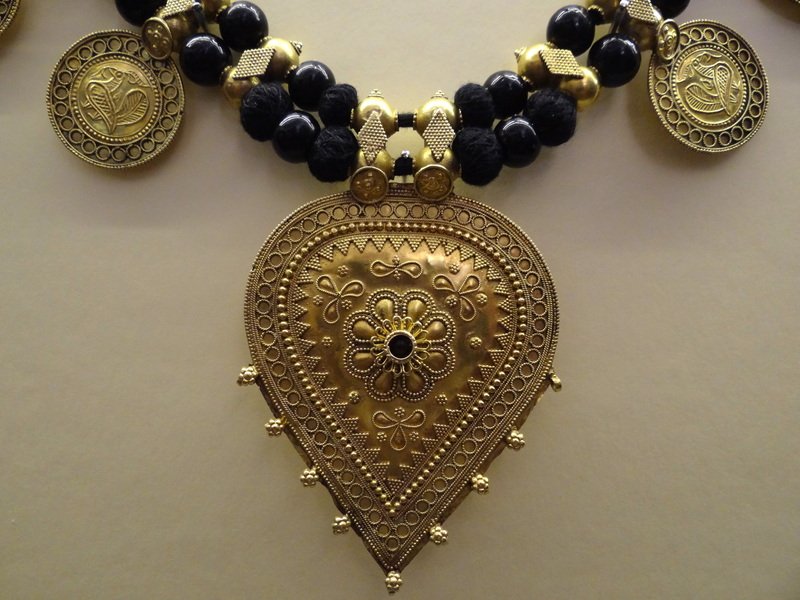
Contemporary jewelry
Fast forward to the 1960s, successive generations of independent jewelers have continued to challenge the conventions of jewelry design. Technological advancements and non-precious materials, such as paper, textile, and plastics, broke the notions of status typically attached to jewelry. With the rise of avant-garde artists, jewelry became a form of wearable art, continually exploring the interaction of jewelry with the body and pushing the boundaries of wearability to the limit.
Where Did Gold Come From?
Humans first discovered gold as shining yellow nuggets in streams across the world. Because of that, it’s discovery occurred in many different groups in various places. Naturally, nearly everyone who found it was impressed by it. Gold then became the first precious metal widely known to humans. While the development of iron and copper-working significantly contributed to our economic and cultural progress, we can’t discount the fact that gold came first.
Without the technology to melt metals, ancient cultures turned to pure gold because of its malleability and permanence. It will neither corrode nor tarnish, making it the perfect metal to use in decorating a throne or creating jewelry. These qualities are also the reason it was linked to royalties and deities by early civilizations.
The Value of Gold
While the earliest instances of human interaction with gold are unclear, many cultures around the world associated it with gods, immortality, and wealth. Ancient peoples sought gold in the name of gods and rulers. To them, gold equaled power, beauty, and being elite. Its universal appeal led to its use as currency before paper money existed. People traded it for a value based on its rarity. Over time, however, it acquired a value separate from itself when Lydian merchants manufactured gold that represented a market-based value.
When was Gold First Used in Jewelry?
Historians suggest that gold has been used in the manufacture of fine jewelry as far back as 4000 B.C. in Eastern Europe and Iraq in 3000 B.C. So if you’re wondering who invented gold jewelry, it’s the people in these early civilizations. Gold has been around for such a long time, but it remains incredibly prevalent due to its cultural significance and its valuable characteristics. This metal is extremely malleable and can be quickly melted and re-forged. These qualities make it a great base material for jewelry.
About Gold Jewelry
Now that we’ve discussed the origins of gold jewelry, let’s tackle everything you should know about this precious metal. The information below can help you understand how to determine the real value of gold jewelry so that every penny you spend will be worth it.
Color
Many cultures have imagined gold to represent the sun because of its natural brilliant yellow color. While it remains its most popular color, gold nowadays comes in different shades. The process of alloying—mixing other lesser metals with pure gold—makes it more durable, but it can also be used to alter its color.
Yellow gold
This is a mixture of pure gold, silver, copper, and sometimes traces of zinc. These elements give yellow gold its natural luster.
White gold
This is a mixture of pure gold and other white metals, like palladium or silver. This alloy gives it a modern silvery-white hue. It’s typically plated with rhodium—a tough element—to yield a harder surface and give it a brighter shine.
Rose gold
When pure gold is mixed with copper, the result is a romantic pink hue called rose gold. The more copper there is, the rosier the color.
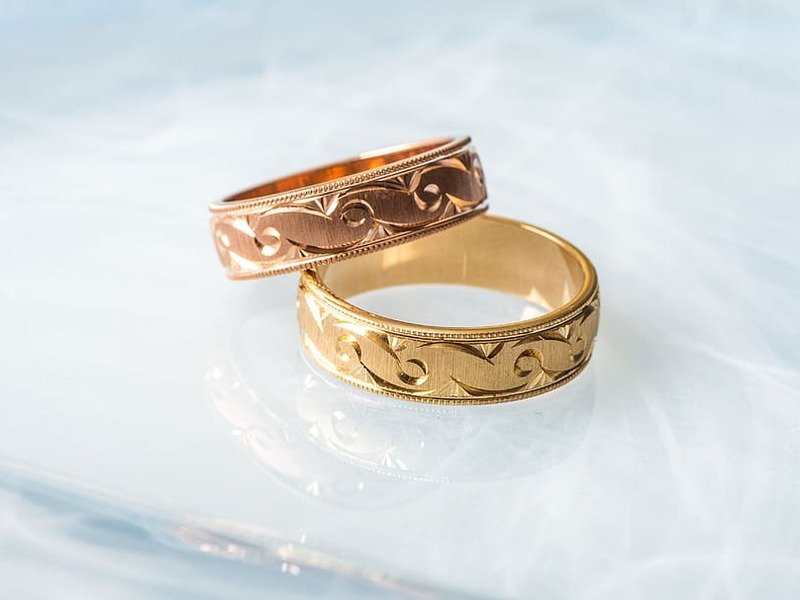
Karat
Karat is the standard measurement of gold and is denoted by a number followed by the letter “k.” It indicates how much of the metal in a piece of jewelry is gold. There are 24 units called karats in every pure gold piece. So if you purchase a 24-karat gold ring, you’re wearing 100% pure gold on your finger.
24k (100% pure gold)
Make no mistake; this purity level is not always the best to buy, even if it’s the highest. As mentioned above, pure gold is soft and can be easily bent or scratched. It’s the most expensive, yet it’s not suitable for everyday wear.
22k (92% gold and 8% other metals)
Though 8% alloyed metal seems little, it still does make an impact on the toughness of gold jewelry. Nevertheless, you still need to be careful with a 22k gold piece as it’s the softest form of mixed metal gold jewelry.
18k (75% pure gold and 25% other metals)
This is probably the most common mix of gold and other metals that you’ll find in shops. 18k gold jewelry has a more vibrant yellow tone than a 14k piece.
14k (58% gold and 42% other metals)
This purity level is the most ideal for daily use, as it’s a tad stronger than 18k and 22k pieces. It’s more resistant to wear and tear, which makes it a popular choice for wedding rings and engagement rings. If you’re into sports, exercising, and working with your hands, 14k gold jewelry is the best option for you.
You may refer to the table below to see the most common karats of gold you’ll find in jewelry stores.
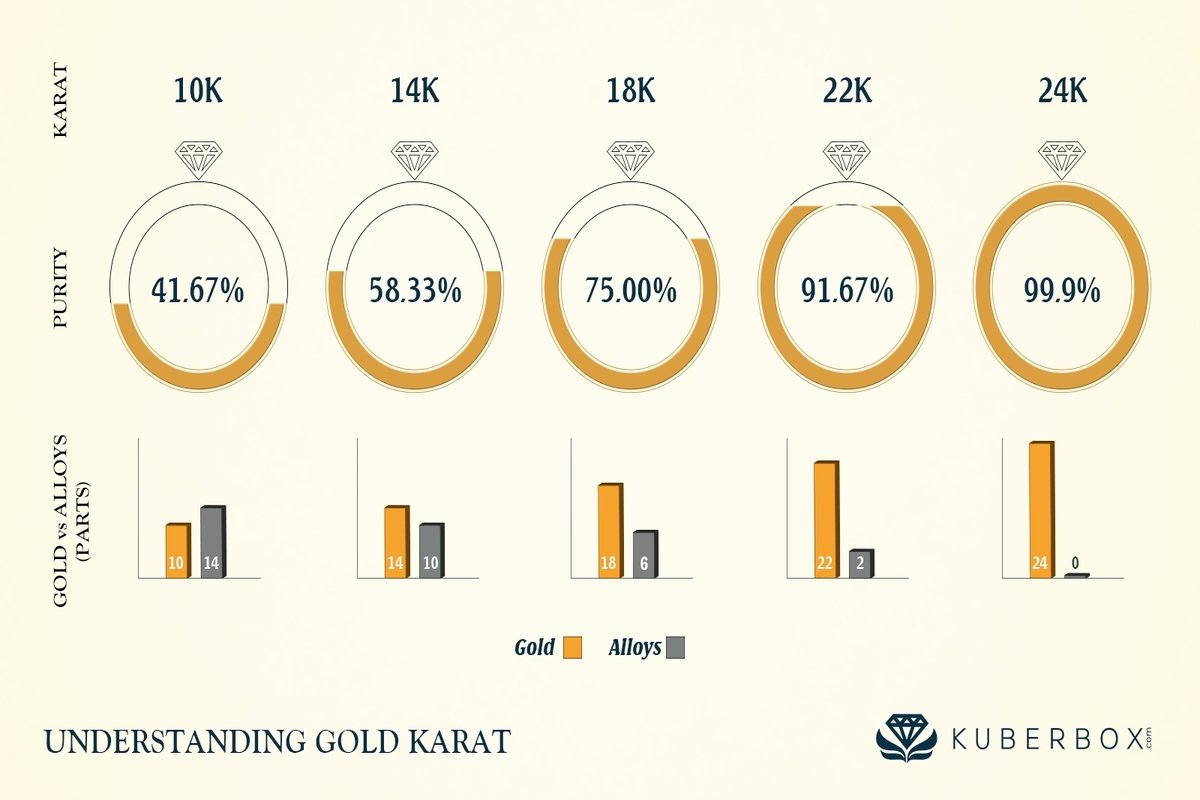
Hallmark
These are unique markings found on the inconspicuous parts of your gold jewelry, like the inside of a ring. Some markings indicate the karat of the piece, while others show the percentage of purity. Sometimes, hallmarks also indicate its date of completion and country of origin.
Considerations When Buying Gold Jewelry
The value of gold is directly proportional to its purity level, which means that the higher the karat, the higher the value of a piece. However, that doesn’t mean that you should always aim for the higher karats. When buying gold, you must first consider these two critical factors:
What will you use it for?
24k gold is too malleable, and that makes it inappropriate for everyday wear. If you intend to use your gold jewelry daily, you should opt for low-karat pieces, such as 10, 12, or 14 karats. Remember that these pieces have other metals in them, which makes the alloy stronger. High-karat pieces should be reserved for rare occasions, such as formal parties and ceremonial events. There is less chance that you’ll damage your 18k and 24k gold jewelry if you only use them sparingly.
Skin compatibility
One of the most common metals mixed with gold is nickel. It makes gold jewelry more durable, but it can be an issue for people with nickel allergies. If you’re one of them, the recommended karat purity for you is 18k.
How to Buy Gold Jewelry Wisely
Now that we’ve covered everything you need to know about the qualities of your gold jewelry, it’s time to shop. Here are some useful tips when purchasing gold jewelry.
Find a reputable vendor
The easiest way to know if you’re dealing with a trusted retailer is to go to already famous jewelers, such as Cartier, Tiffany & Co., David Yurman, and the like. These designers have already established their places in the jewelry scene and have been selling high-quality products for decades. However, their jewelry prices might be an issue since they put substantially higher premiums on their pieces.
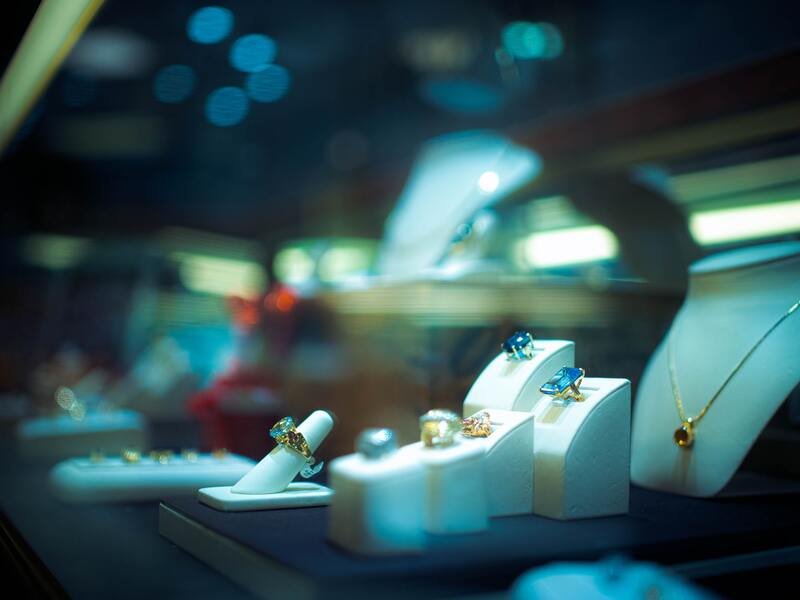
If you want more budget-friendly options, look for independent dealers that also offer exquisite pieces. One way to make sure if you’re transacting with a trusted jeweler is by checking their credentials and certificates.
Always compare prices
If you’re the type of person who makes decisions quickly, you might immediately buy an item of jewelry when you feel that it speaks to you. While it’s a useful determining factor, you should consider checking if that piece is available for a much lower price at another retailer. If you adopt this practice, you’ll most probably end up making a more economical purchase.
We hope this guide answered the questions you have about where did gold jewelry originate, who first discovered them, and how to buy them wisely. With this information, you should be able to find the perfect gold piece with ease and confidence!
If you want to explore the other metals and how they compare to gold, check out this guide we wrote about precious metals and gemstones.

